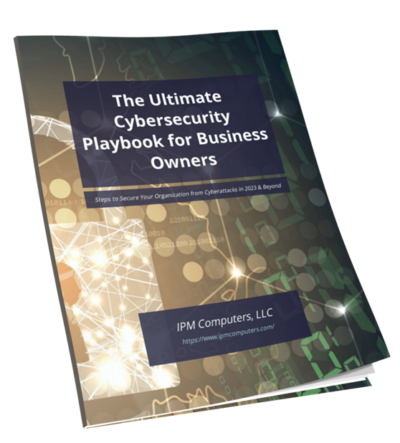Integrating IT with Myrtle Beach business continuity planning is vital for small and medium-sized businesses (SMBs).
Challenges faced by SMBs include:
- Limited resources and budget constraints
- Lack of awareness about the importance of IT in BCP
- Difficulty in identifying critical IT systems and their dependencies
With our IT consulting in Myrtle Beach SC, we aim to equip SMBs with practical insights on establishing robust business continuity plans (BCP) that incorporate effective security measures. By addressing common pitfalls and outlining effective strategies, you can enhance your organization’s resilience against disruptions.
What is a Business Continuity Plan?
A business continuity plan is a strategic framework designed for keeping organizational operations online during and after a disruption. The essential components of a BCP include:
- Risk Assessment: Identify potential threats and vulnerabilities.
- Business Impact Analysis (BIA): Evaluate the effects of disruptions on critical functions.
- Recovery Strategies: Outline procedures and resources needed to restore operations.
- Roles and Responsibilities: Assign specific tasks to team members during an emergency.
- Communication Protocols: Establish clear lines of communication internally and externally.
- Testing and Maintenance: Regularly update the plan through drills and assessments.
Every business, regardless of size, needs a robust BCP. The reasons are compelling:
- Operational Resilience: A well-prepared organization can adapt to unexpected challenges.
- Financial Stability: Investing in a BCP reduces potential losses from downtime or operational failures.
- Enhanced Reputation: Companies with effective continuity plans demonstrate reliability, fostering trust among customers and stakeholders.
BCP vs Disaster Recovery Plan
Understanding the differences between BCP and DRP is integral for effective business continuity management. Both plans serve critical roles in organizational resilience, but they focus on different aspects of recovery.
Business Continuity Plan
- Prioritizes maintaining business operations during and after a crisis.
- Addresses all functions: personnel, processes, facilities, and technology.
- Aims to keep services running.
Disaster Recovery Plan
- Concentrates specifically on restoring IT systems and data after a disruption.
- Focuses on data backup, recovery procedures, and technology infrastructure.
- Addresses how quickly systems can be restored to normal operations.
Examples
- BCP Scenario: A retail company faces a sudden fire in its warehouse. The BCP outlines immediate actions such as relocating inventory, notifying customers about delays, and adjusting supply chain logistics to minimize impact.
- DRP Scenario: A financial institution experiences a ransomware attack that encrypts customer data. The DRP details steps for restoring data from backups, re-establishing secure access to systems, and implementing cybersecurity measures to prevent future attacks.
The Advantages of Having a Business Continuity Plan
A well-structured BCP provides numerous benefits of business continuity planning that contribute significantly to organizational resilience. Key advantages include:
1. Enhanced Preparedness
Having a BCP safeguards your organization. Making it ready to respond to unexpected events, minimizing downtime and maintaining critical operations.
2. Increased Organizational Awareness
Employees become familiar with their roles during a crisis, leading to quicker and more efficient responses.
Financially, investing in proactive business continuity measures can yield substantial returns:
3. Cost Savings
Organizations with a BCP experience lower recovery costs during disruptions compared to those without a plan. This can include savings on operational losses and reduced insurance premiums.
4. Customer Retention
A reliable BCP helps maintain customer trust by keeping services available. This fosters loyalty and reduces the risk of losing clients during challenging times.
Crisis Management and Emergency Preparedness
Crisis management and emergency preparedness are components of a comprehensive BCP. For SMBs, implementing these strategies can help mitigate the impact of unforeseen events.
Effective Crisis Management Strategies
- Establish a Crisis Management Team: Designate a team responsible for coordinating response efforts during a crisis. This team should be trained and familiar with the BCP.
- Develop Clear Communication Protocols: All employees should know their roles and channels for communication during a crisis. Clear guidelines can prevent confusion and misinformation.
- Conduct Regular Training and Drills: Frequent training sessions help reinforce the procedures outlined in your BCP. Simulated drills enable staff to practice responses in real-time scenarios.
The Role of Emergency Preparedness
Emergency preparedness is pivotal in enabling SMBs to maintain operations amidst disruptions. Aspects include:
- Risk Assessment and Planning: Identify potential risks specific to your industry, such as natural disasters or cyberattacks. Develop tailored plans for each scenario.
- Resource Allocation: Ensure that necessary resources, including emergency supplies, backup data solutions, and contact lists, are readily accessible.
- Continuous Improvement: Regularly review and update your emergency preparedness plans based on new threats or changes in business operations.
Comprehensive Risk Assessment Strategies for SMBs
Conducting thorough risk assessments is essential for SMBs to identify and mitigate potential vulnerabilities. Here are key steps to implement effective risk assessment strategies focusing on financial risks and cybersecurity threats:
1. Identify Potential Risks
- Assess internal and external factors that could impact business operations.
- Consider financial vulnerabilities such as cash flow disruptions, credit risks, and market fluctuations.
2. Evaluate Cybersecurity Threats
- Recognize common threats like ransomware attacks, phishing scams, and data breaches.
- Know the potential consequences of these threats on your business continuity.
3. Prioritize Risks
- Rank identified risks based on their likelihood of occurrence and potential impact.
- Allocate resources to address the highest priority risks first.
4. Develop Mitigation Plans
- Create specific strategies to reduce or eliminate identified risks.
- For financial risks, consider diversifying income streams or establishing emergency funds.
- For cybersecurity threats, implement strong security protocols such as multi-factor authentication and regular software updates.
5. Test and Update Regularly
- Conduct regular testing of your risk management plans through simulations or tabletop exercises.
- Update risk assessments periodically to reflect changes in the business environment or emerging threats.
Building Resilience Through Integrated IT and Business Continuity Planning
Organizational resilience in SMBs through integrated IT and business continuity planning is vital. A comprehensive BCP serves as a safeguard against both IT-related risks and various disruptions that could threaten long-term sustainability.
Elements to consider include:
- Holistic Risk Assessment: Identify vulnerabilities across all areas, including IT infrastructure.
- Continuous Updating: Regularly revise your BCP to reflect new challenges, such as evolving cyber threats or shifts in market dynamics.
- Employee Engagement: Confirm that all staff are aware of their roles within the BCP and trained to respond effectively during crises.
By prioritizing these aspects, SMBs can achieve greater stability, protect their assets, and enhance customer trust. Taking proactive steps now will fortify your organization.
Frequently Asked Questions About Business Continuity
What is a Business Continuity Plan (BCP) and why is it important for SMBs?
A Business Continuity Plan (BCP) is a strategic framework that outlines how a business will continue operating during and after disruptions. For small and medium-sized businesses (SMBs), having a robust BCP is crucial as it ensures organizational resilience, helps in maintaining operations, and minimizes financial losses during unforeseen events.
How does a Business Continuity Plan differ from a Disaster Recovery Plan?
While both BCP and DRP are critical for managing crises, they serve different purposes. A BCP focuses on maintaining business operations during disruptions, addressing various risks including operational, financial, and reputational aspects. In contrast, a Disaster Recovery Plan (DRP) specifically targets the recovery of IT systems and data after an incident.
What are the key components of an effective Business Continuity Plan?
An effective Business Continuity Plan includes several key components: risk assessment, business impact analysis, recovery strategies, communication plans, training programs, and regular testing and updating processes. These elements work together to ensure that an organization can respond effectively to disruptions while safeguarding its assets and maintaining uptime through Myrtle Beach data backups.
What advantages does having a well-structured Business Continuity Plan provide for SMBs?
A well-structured Business Continuity Plan enhances organizational resilience by enabling SMBs to quickly adapt to changes and recover from disruptions. Financially, investing in proactive continuity measures can reduce downtime costs, protect revenue streams, and improve customer trust. Overall, it positions the business for long-term sustainability.





